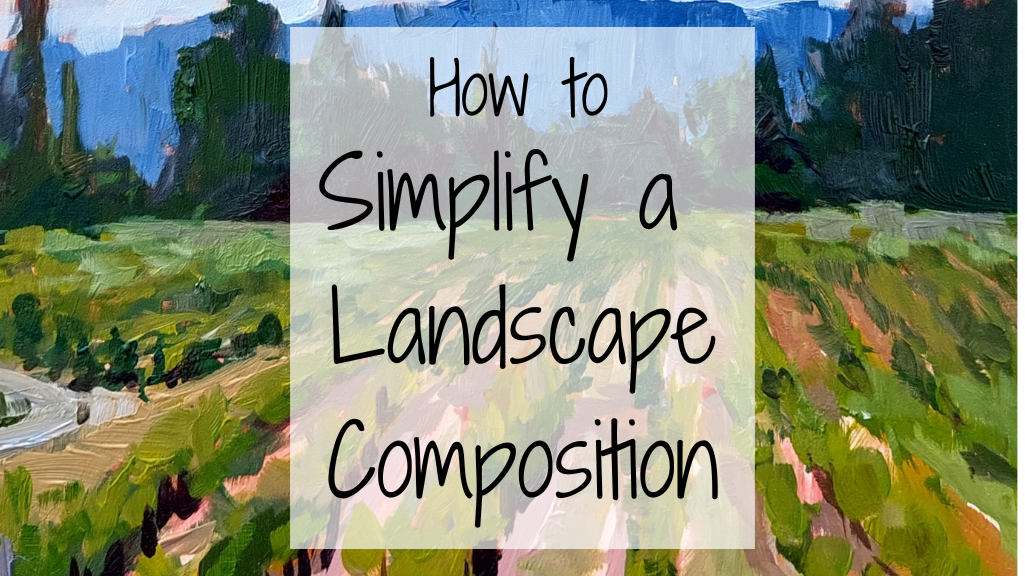
by Kristen O'Neill | Dec 13, 2022 | Art Lessons
What makes a great landscape painting isn’t always the scene before us. However, we have a magical superpower as artists, we can (and should!) move things around. Simplifying a landscape composition creates a way to celebrate the important things of the...
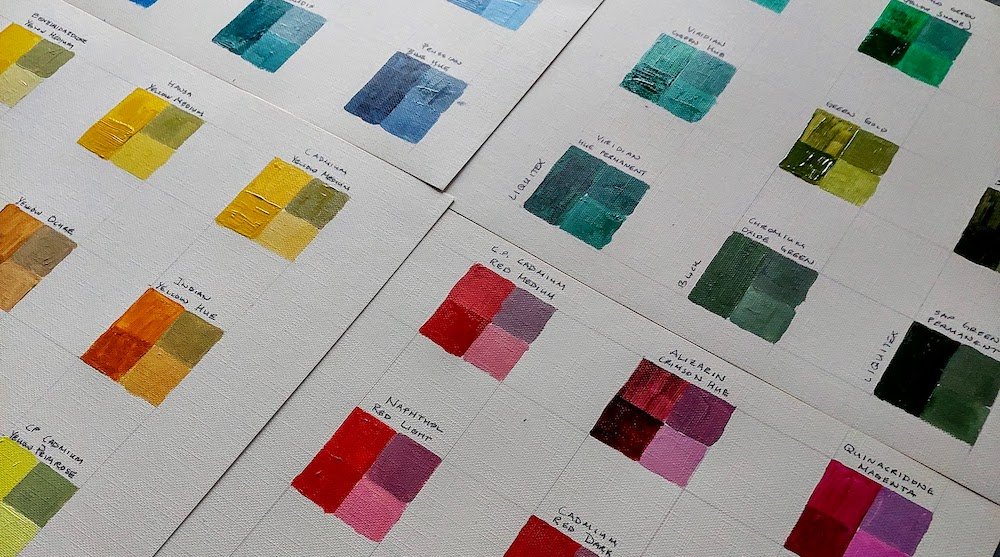
by Kristen O'Neill | Dec 4, 2022 | Art Lessons
What are Paint Sample Squares? Paint sample squares are a way to tell how a certain pigment behaves at a glance. You can see the true color, how it looks with one coat or two, which helps understand that pigments transparency or opaque qualities. There are different...

by Kristen O'Neill | Nov 25, 2022 | Art Lessons
One of the first things I noticed about some rivers in Oregon, and the Smith river in Northern California, are their colors. Wowza. It seems like unbelieveable, magical, fairy-land kinds of color. The water is clear, yet emerald. Not the murky green of algae blooms,...
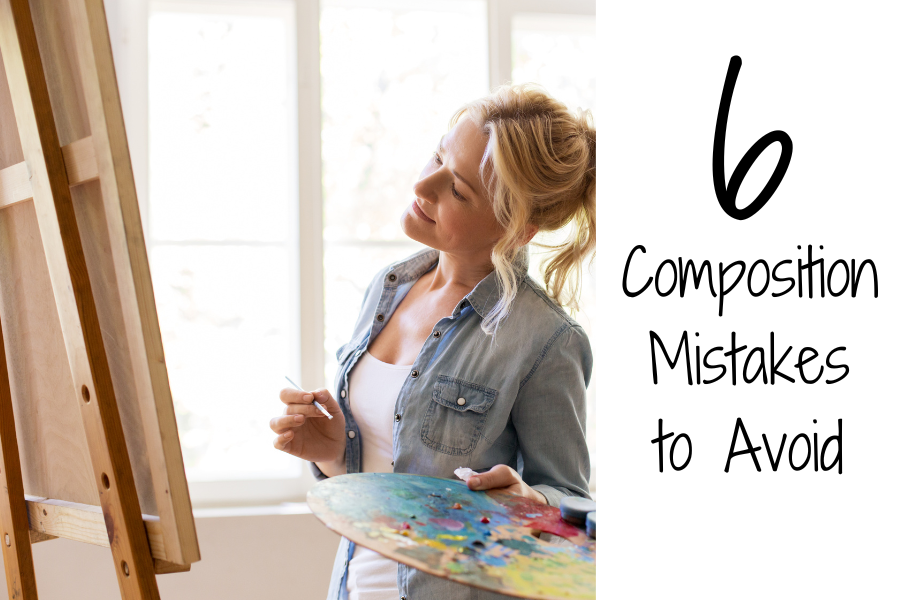
by Kristen O'Neill | Nov 15, 2022 | Art Lessons
Why is Composition Important? Composition is one of the most important parts of making a good artwork. It is impossible to have a great painting with a bad composition. And, it can be one of the biggest struggles for a painter in the beginning. This post is to help...
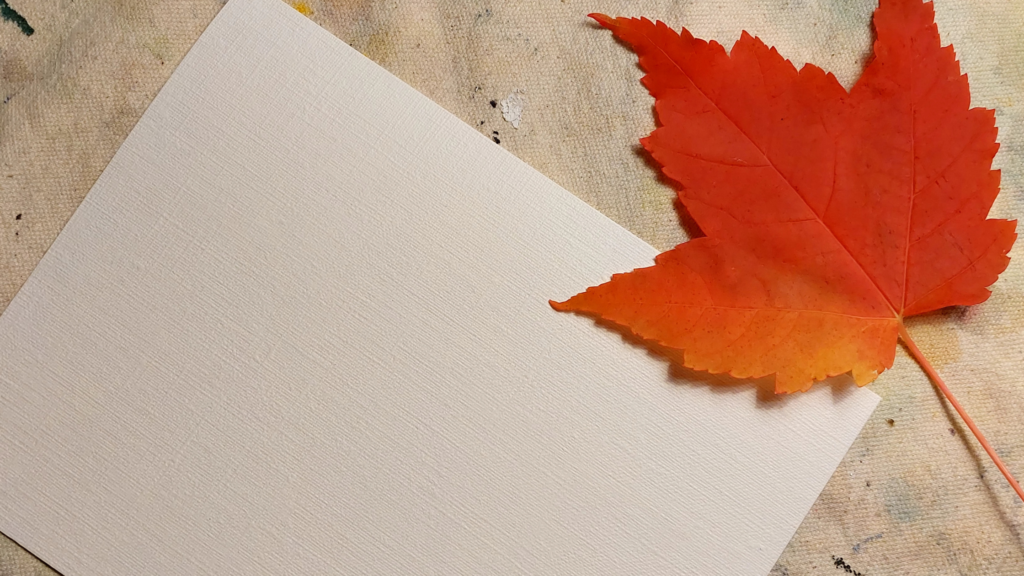
by Kristen O'Neill | Nov 3, 2022 | Art Lessons
Painting fall colors are so inspirational. Bright and bold, these temporary splashes of color are fun to celebrate. Here, I walk you through a step-by-step journey of painting a leaf – with a focus on color choices. Materials: Fantastic leaf from tree...
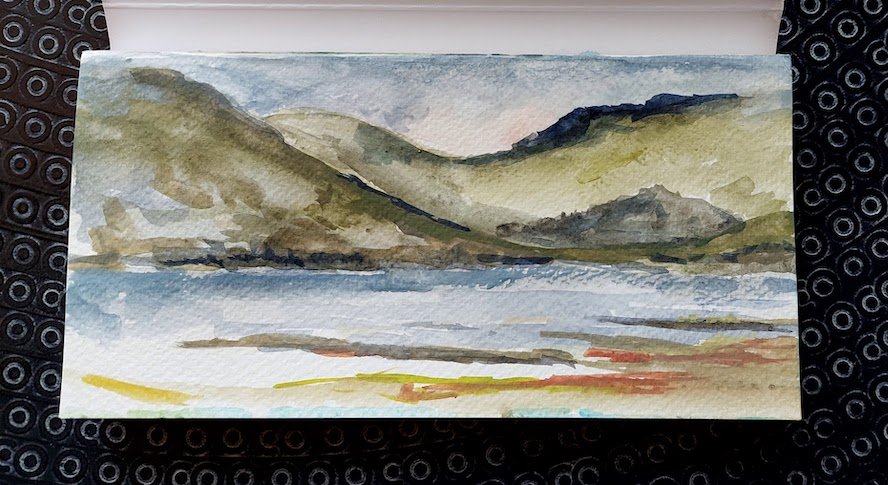
by Kristen O'Neill | Sep 6, 2022 | Art Lessons, The Practice of Art
The Isle of Skye seen from the amazing B&B in Glenelg, Scotland Sometimes I find myself taking myself way too seriously. Does this happen to you? I go to sit down and paint and all the sudden I bring all this pressure with me. Like, I need to paint a...

by Kristen O'Neill | Jul 26, 2022 | Art Lessons
Achieving realistic color and values can go a long way to painting anything. With ocean waves, we also have to make sure that we are following the rules of how nature works to create a believable wave. Believable Waves – Values #1 The deepest part of the ocean...
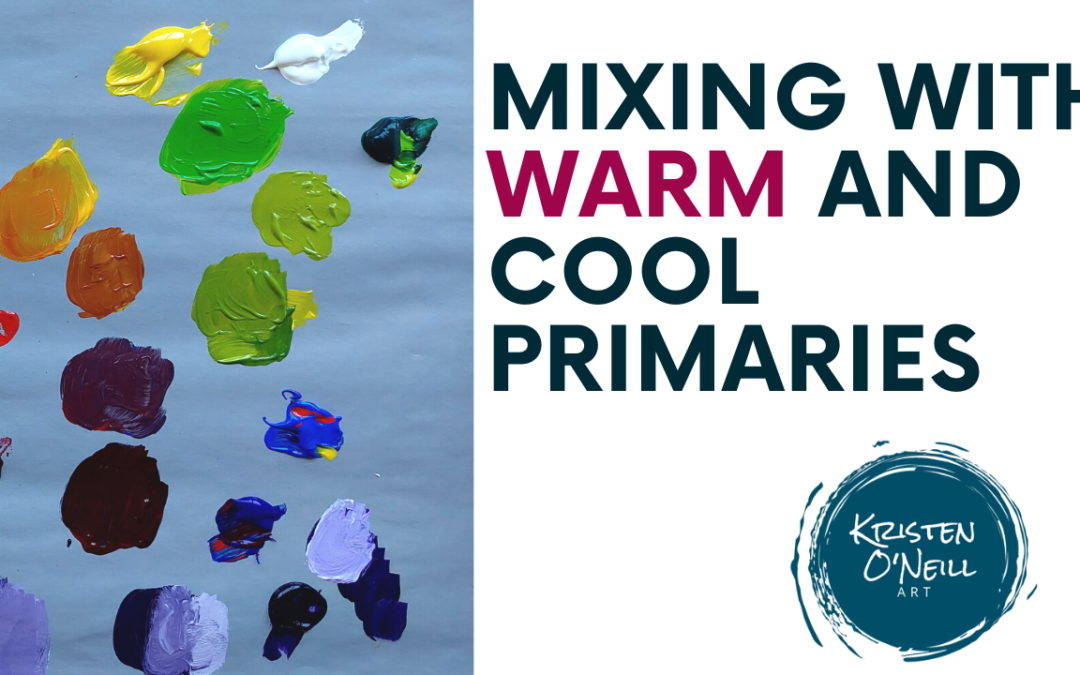
by Kristen O'Neill | Jul 7, 2022 | Art Lessons
Mixing with warm and cool primaries is really the secret to knowing how to avoid muddy colors . Also, mixing ON the right type of palette can really help too. Check out this video I made all about it.

by Kristen O'Neill | Jun 29, 2022 | Art Lessons
Painting waves is definitely a time where knowing the shape of a wave ahead of times helps it all come together. We think of waves as being a round semi-circle shape, but they are more of an oblong C shape, that is leaning towards the open ocean. How to paint the...
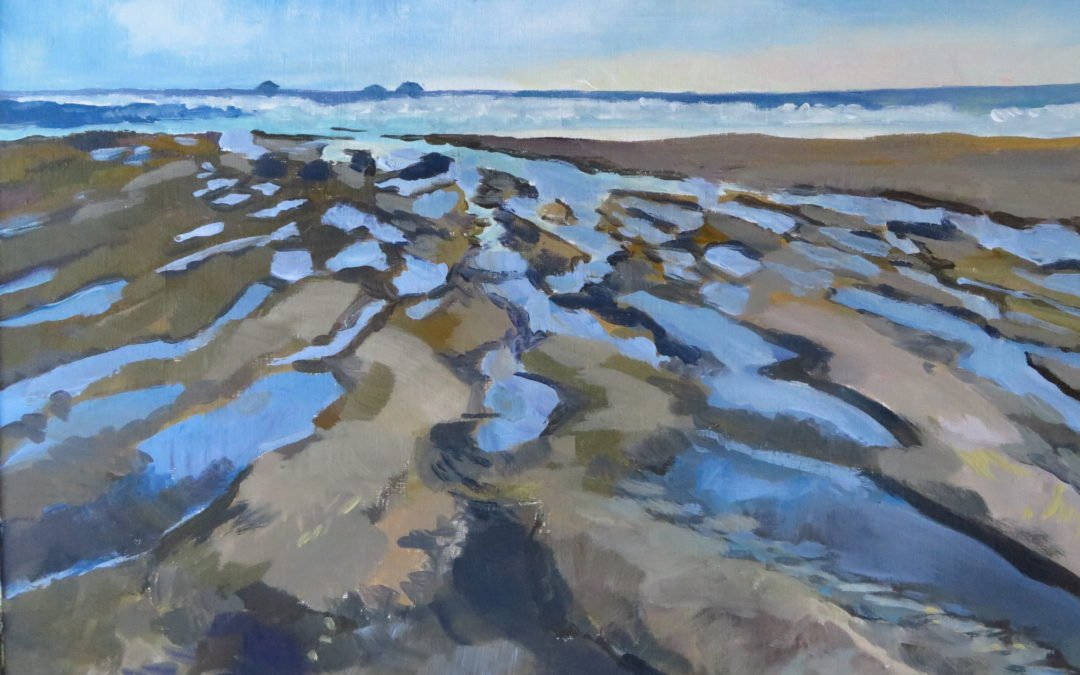
by Kristen O'Neill | Jun 7, 2022 | Art Lessons
Rule of Thirds One of the most common rules in composition is the rule of thirds. Basically, if you have a line, you move it to be one-third in from the edge. On the image the below, the 1/3 lines are dashed. The circles represent where the lines cross, being an extra...
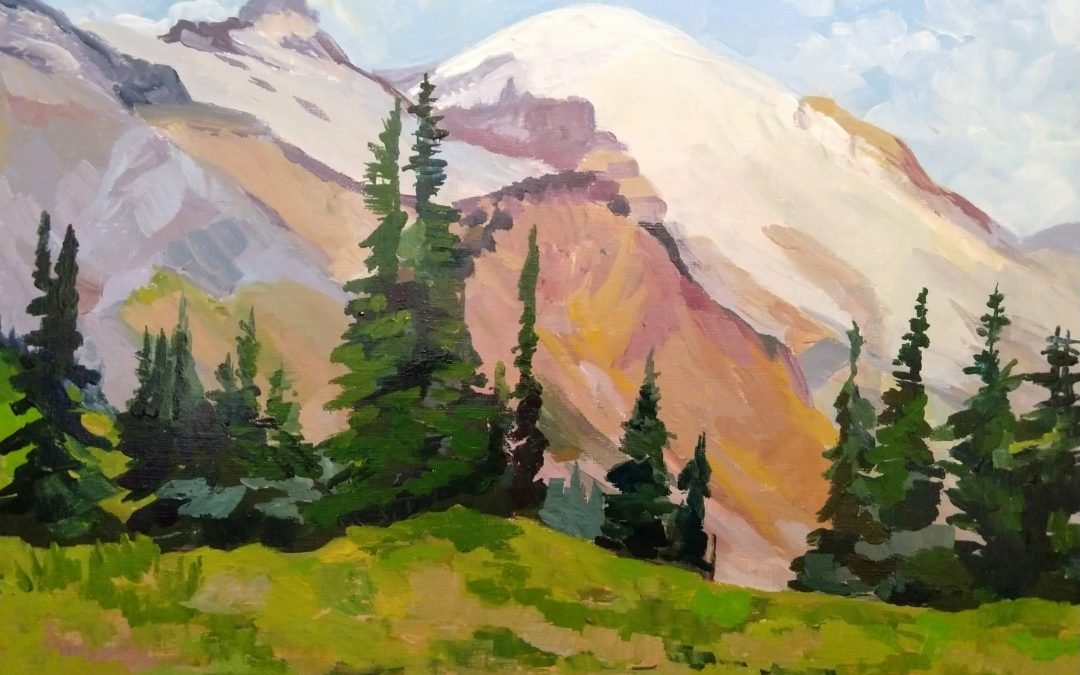
by Kristen O'Neill | May 31, 2022 | Art Lessons
©Kristen O’Neill, Mountain Glow, 36 Views of Mt. Rainier series, Acrylic on Paper, 11 in. x 14 in. Golden Hour The “golden hour” is the time when the sunlight is shifting warmer due to sunrise or sunset. Remember, at these times, the sunlight has to...
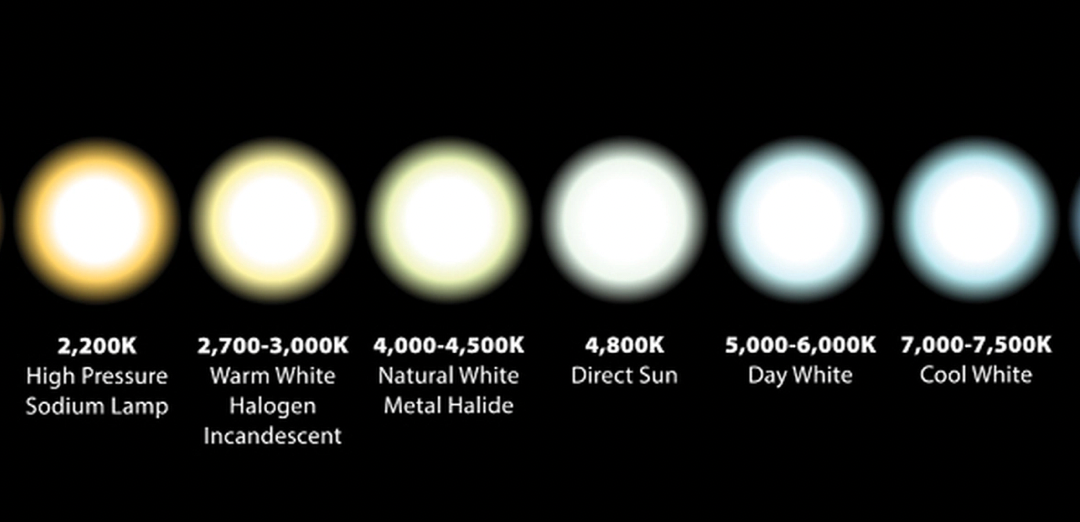
by Kristen O'Neill | May 24, 2022 | Art Lessons
The last post covered color temperature in paints. This one covers temperature in lighting. I first came upon this issue (dating myself here) in college with slides. If you bought the wrong type of slide film all your slides came out horrible. (So sad.) Also, I am so...

by Kristen O'Neill | May 17, 2022 | Art Lessons
What is “Color Temperature”? Color temperature is how warm or cool a color feels. For paints this means that: Warms: Red, Orange, Yellow Cools: Green, Blue, Violet Color temperature in lighting is a bit different. That refers to degrees Kelvin. We will...
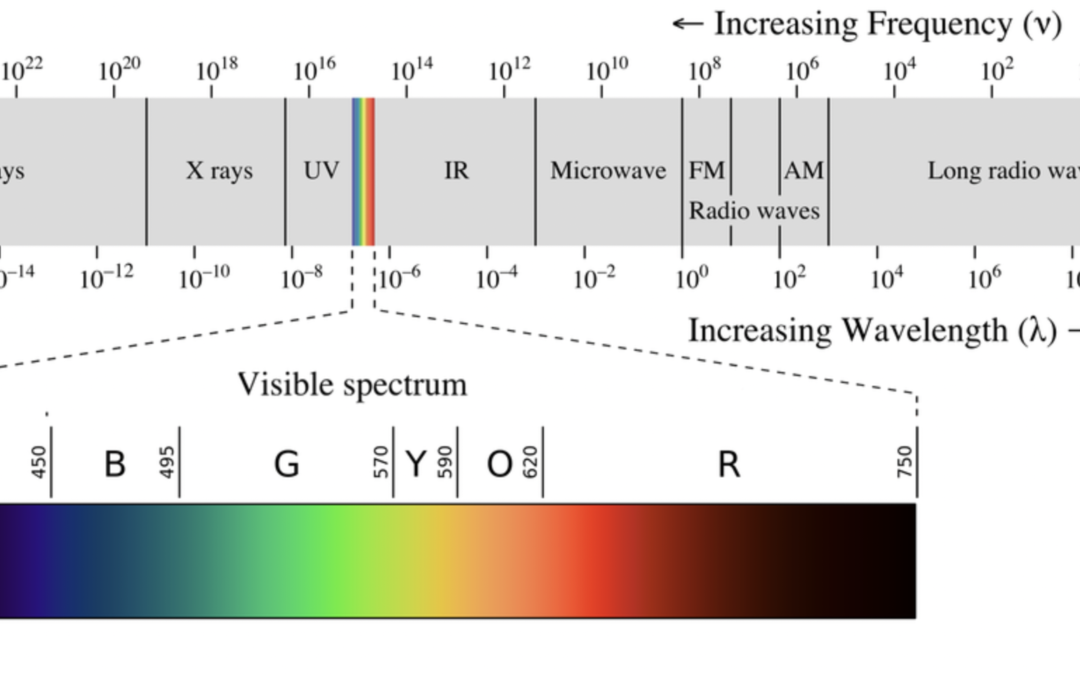
by Kristen O'Neill | May 10, 2022 | Art Lessons
Magical Unicorns Magenta is a magical unicorn. It is the color that really shouldn’t exist. First, let me explain about magenta. Colors, in light, are the visible to humans part of the electromagnetic spectrum. Past red is infrared (on the chart above as IR),...
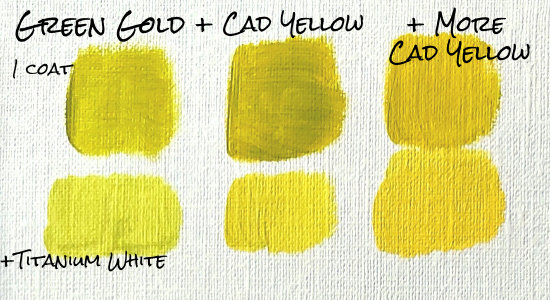
by Kristen O'Neill | May 3, 2022 | Art Lessons
I love the green of spring. That new growth green is so exciting to me. It took me a while to figure out how to mix spring greens. One day, out of complete frustration, I hauled all my paint to the middle of forest, sat down and mixed until I came across what I was...
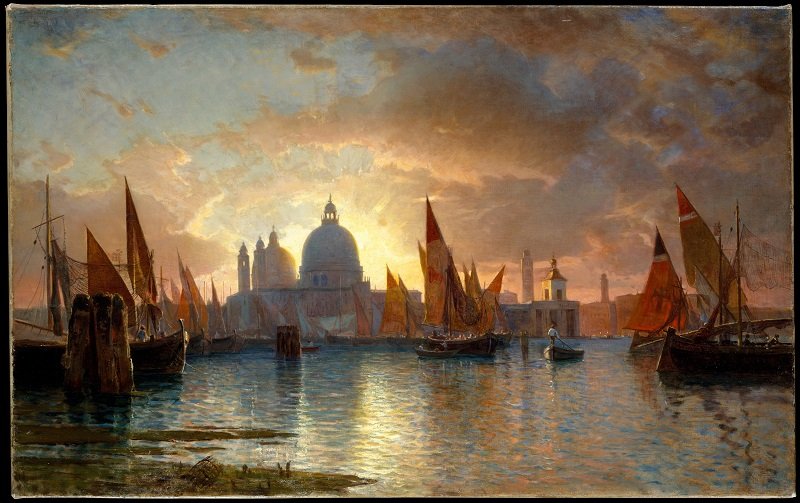
by Kristen O'Neill | Apr 26, 2022 | Art Lessons
Why We Paint Water Reflections The last three posts have been how to paint various aspects of water reflections. If you missed them, here are the links to them. From Calm to Choppy: How Water Reflections Act to Surface Changes Water Reflections: Angles and Sizes...

by Kristen O'Neill | Apr 19, 2022 | Art Lessons
This post covers how water reflections are changed by the surface of the water, from calm to choppy waters. Calm Water Let’s start out with the easy one, calm water. In perfectly still water the surface acts like a perfect mirror, with no distortions in the...
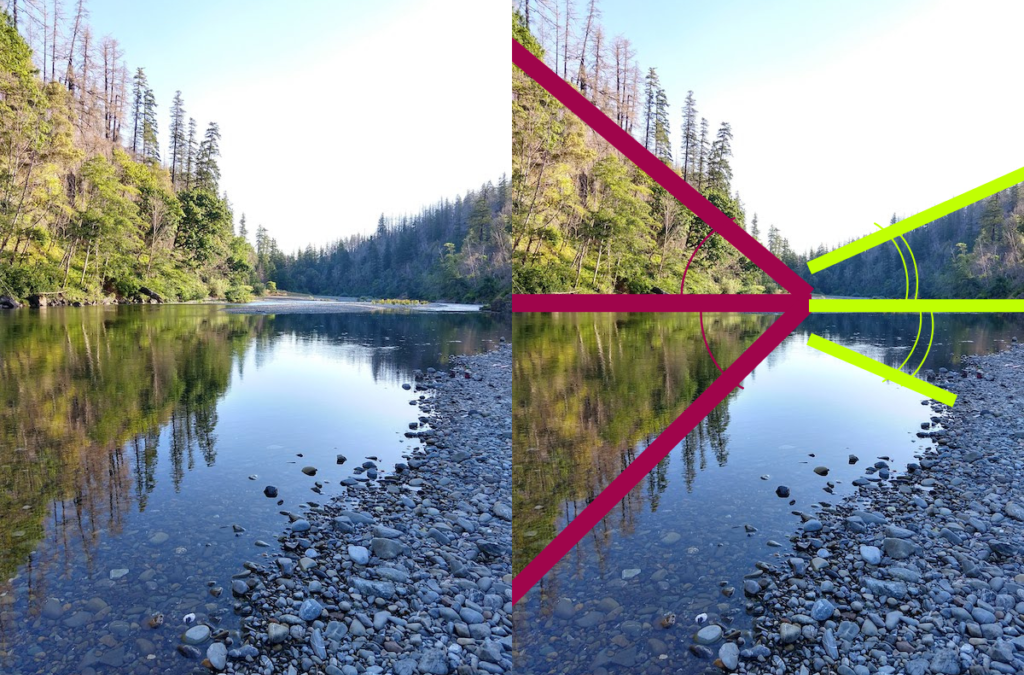
by Kristen O'Neill | Apr 12, 2022 | Art Lessons
Creating a painting with water reflections has some basic rules – based on the real world and some simple physics. (Really simple. No need to run away. Honest.) Angle of Reflections in Water Simple answer here. Down. The reflections are heading towards your...

by Kristen O'Neill | Apr 5, 2022 | Art Lessons
Water reflects what is around it. This post focuses on painting the values of those reflections. (“Value” is the light/dark scale.) Reflections Head to the Middle Values Dark Reflections Get Lighter Light Reflections Get Darker Now, if you are scratching...
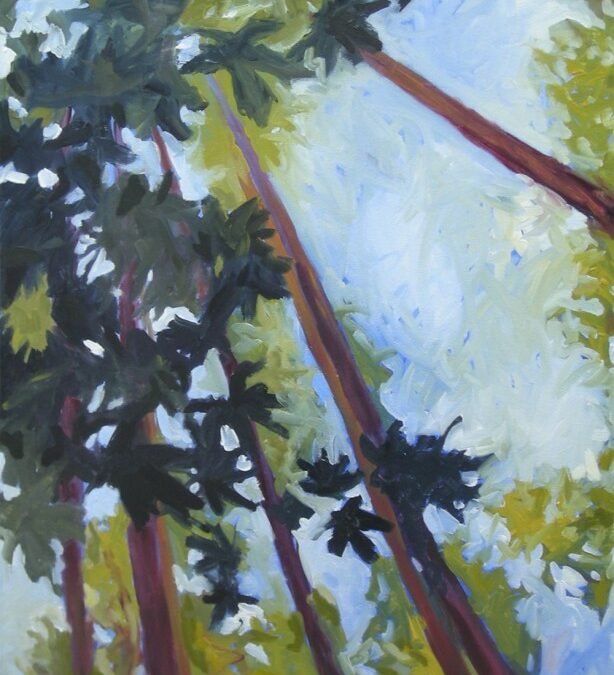
by Kristen O'Neill | Mar 29, 2022 | Art Lessons
One of the best reasons to make a painting is the physicality of the paint itself. It smushes under our palette knife, and dances out from under our brushes. One day in art school, I learned to pay attention to not just the shape that I was making, but the edges of...
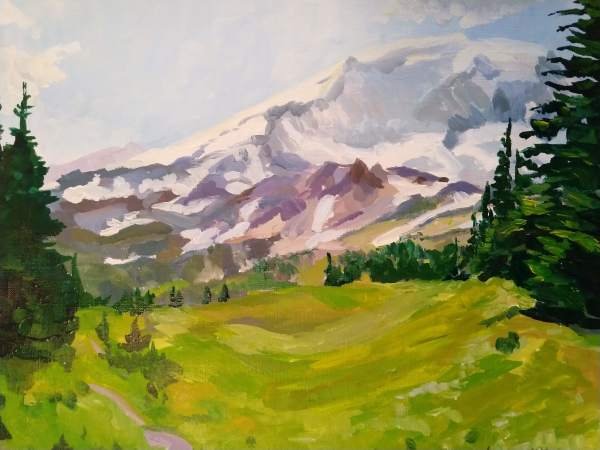
by Kristen O'Neill | Mar 22, 2022 | Art Lessons
Make Details Work For You Details in painting can be a great way to portray your subject matter, and keep the viewer looking at your painting. It can also be a way to spoil what could have been so much better. This post explores ways to use detailed areas in your...
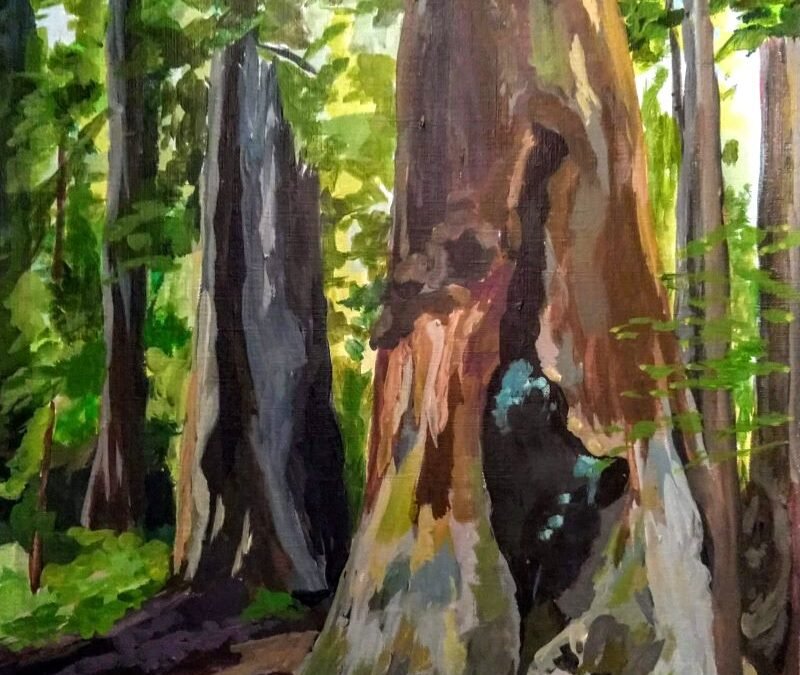
by Kristen O'Neill | Mar 15, 2022 | Art Lessons
Creating the illusion of distance in a painting can be aided by using scale. Scale is all the visual hints that help you understand the size of something. Easy ways to create scale include: Using an object of a known size (person, soda can, etc.)Using the same object...

by Kristen O'Neill | Mar 8, 2022 | Art Lessons
Great Smoky Mountains National Park Atmospheric perspective is how to create the illusion of depth that occurs in real life when the air particles make objects that are further away seem more blue and lighter in value. Using atmospheric perspective is a great way to...

by Kristen O'Neill | Mar 1, 2022 | Art Lessons
This month’s blogs post are all on the theme of creating distance in landscape painting. In painting we have these magical (okay, totally not magic, but feels like it!) ways of creating 3D space on a 2D surface. This week we are starting with the basics. Many...

by Kristen O'Neill | Feb 22, 2022 | Art Lessons
One of the biggest struggles I see for newer painters is how to stop fussing with your paint. After a lifetime of using pens and pencils to write and draw, the paint brush can feel like a similar tool in our hands. Yet, it is very different. We need to continuously...
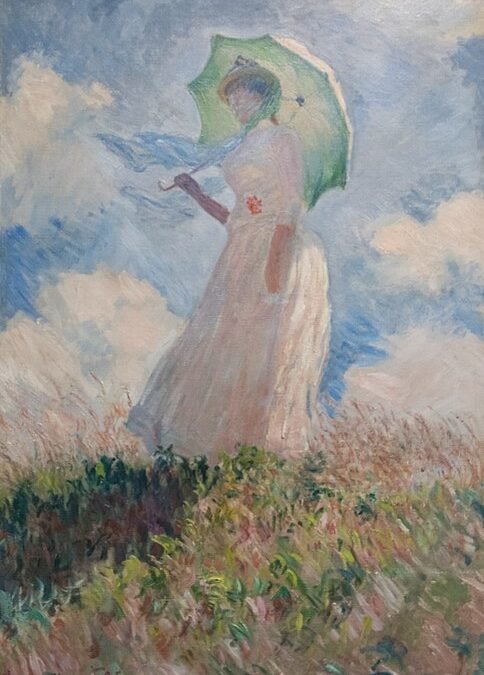
by Kristen O'Neill | Feb 15, 2022 | Art Lessons
How to paint something that is white may seem easy at first, but white creates a unique problem. Values do a lot of the work in a painting (usually while color is stealing all the credit). Values are the light-dark scale. When we paint a subject matter that is white,...

by Kristen O'Neill | Feb 9, 2022 | Art Lessons
Painting Snow – Learning color tips from paintings by Lawren Harris Painting snow starts with the recognition that white isn’t white. In last’s weeks blog (7 Color Tips: Shadows Aren’t Black) I covered how shadows aren’t black, and here for much of the...
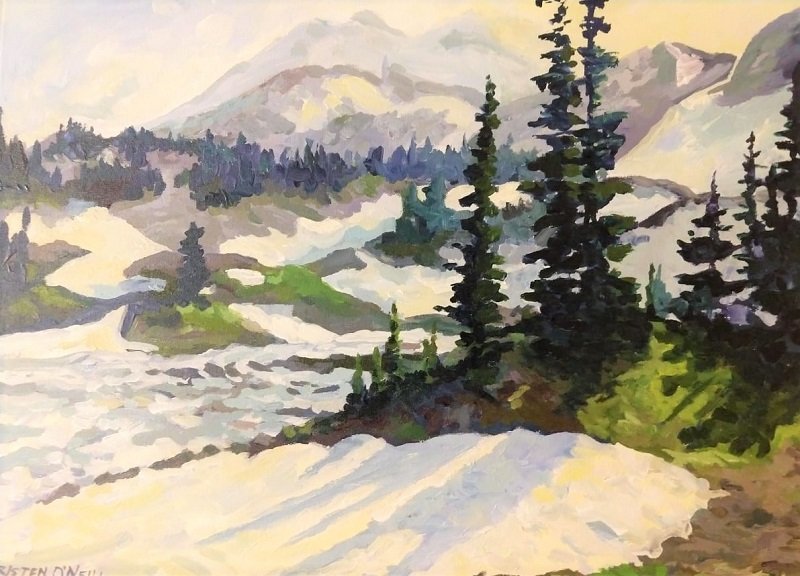
by Kristen O'Neill | Feb 1, 2022 | Art Lessons
© Kristen O’Neill, Mount Rainier Wonderland Trail No. 9, Acrylic on Canvas, 18″ x 24″ (Click on photo to check availability.) Notice the blue of the shadows, verses the warmer yellow of the highlights on the snow. Shadows Aren’t Black –...

by Kristen O'Neill | Jan 25, 2022 | Art Lessons
While landscapes may hold still for us to paint them, the weather doesn’t always. It can be tons of fun to have an active weather day for subject matter, but you may need to rapidly get your ideas captured before you blink and everything changes. Knowing how to paint...
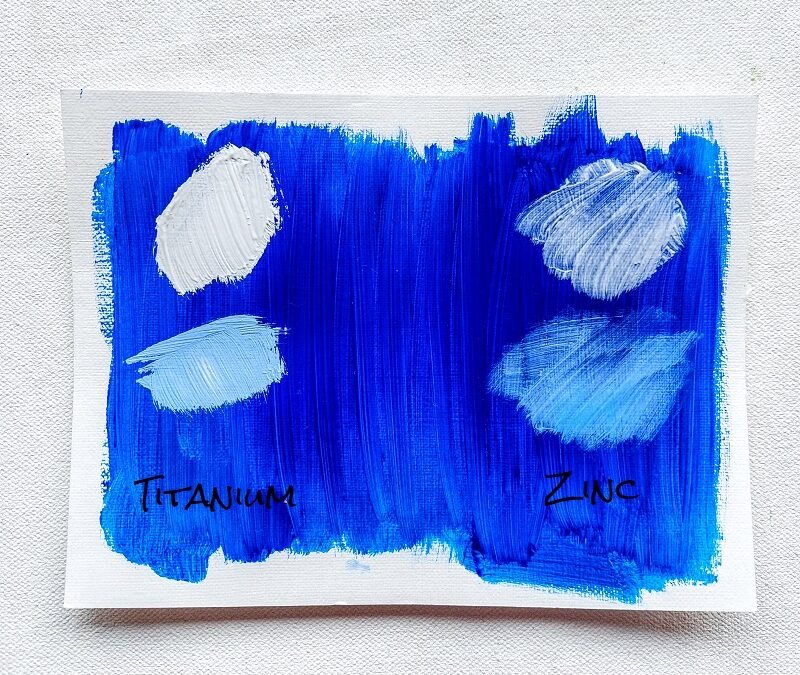
by Kristen O'Neill | Jan 18, 2022 | Art Lessons
An array of acrylic colors at my local art store. Often when we look at the vast variety of color tubes, we can tell the difference between two of them at glance. Then white shows up. What’s the difference between Titanium and Zinc white? Do we need both? First let me...

by Kristen O'Neill | Jan 11, 2022 | Art Lessons
Sun Sets Behind, Kristen O’Neill, Acrylic on Paper, 11 x 14 in. One of the best qualities of paint is that you can build up paint colors, creating translucent or semi-opaque layers. You can also have opaque layers of colors, where paint peeks through gaps. This...
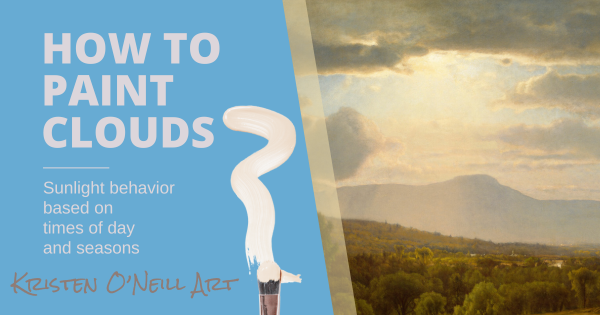
by Kristen O'Neill | Jan 4, 2022 | Art Lessons
Clouds exist outside and anything outside usually only has one light source – the sun. (Or, perhaps the moon if painting a nighttime cloudscape.) An early step in painting an outdoor scene is to know what time of day your painting to takes place. This informs...


































Recent Comments